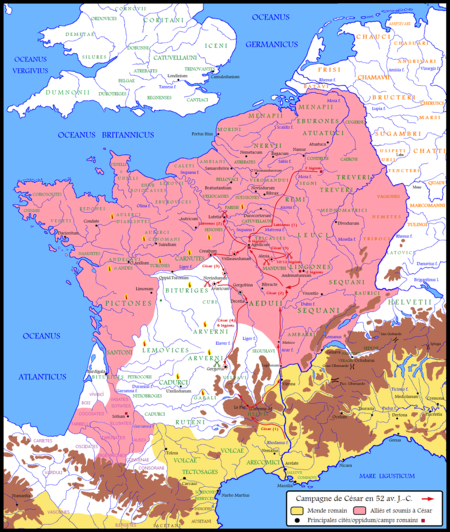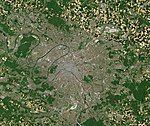Battle of Lutetia
52 BCBattles in Île-de-FranceBattles of the Gallic WarsHistory of Paris

The Battle of Lutetia was a battle on the plain of Grenelle in what is now Paris between Roman forces under Titus Labienus and an anti-Roman Gallic coalition in 52 BC during the Gallic Wars. It was a Roman victory.
Excerpt from the Wikipedia article Battle of Lutetia (License: CC BY-SA 3.0, Authors, Images).Battle of Lutetia
Boulevard Saint-Germain, Paris 5th Arrondissement (Paris)
Geographical coordinates (GPS) Address Phone number Website Nearby Places Show on map
Geographical coordinates (GPS)
| Latitude | Longitude |
|---|---|
| N 48.85 ° | E 2.35 ° |
Address
Coffea
Boulevard Saint-Germain 52
75005 Paris, 5th Arrondissement (Paris)
Ile-de-France, France
Open on Google Maps









